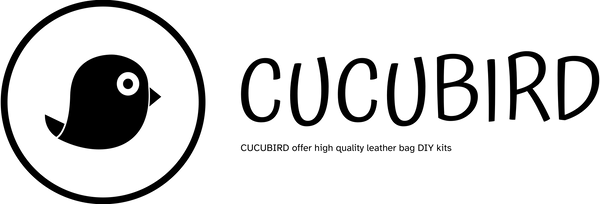
Exploring Next-Generation Eco-Friendly Leather Innovations Transforming Sustainable Fashion in 2025
Aktie
Introduction
As global awareness about environmental issues intensifies, the fashion industry is under increasing pressure to adopt sustainable practices. Among these, the demand for eco-friendly leather alternatives is reaching new heights in 2025. Traditional leather production is known for its significant environmental footprint, involving high water consumption, chemical use, and animal welfare concerns. In response, innovators across the globe are developing next-generation materials that not only mimic the look and durability of conventional leather but do so in environmentally responsible ways. This comprehensive exploration delves into the latest advancements in eco-friendly leather, spotlighting how these innovations are transforming the landscape of sustainable fashion today and in the future.
The Evolution of Plant-Based Leather: A Deep Dive into Biomaterials
One of the most compelling areas of innovation involves plant-based and fungi-derived leathers, which are gaining widespread recognition for their sustainability benefits.
- Mycelium Leather: This material is produced from the root-like structures of fungi called mycelium. It is cultivated in controlled environments, growing rapidly to form leather-like sheets. Companies like Bolt Threads and MycoWorks have pioneered commercial applications of mycelium leather, which boasts advantages such as biodegradability, low water use, and minimal chemical processing. Its texture can be engineered to resemble animal leather closely, making it suitable for a broad range of fashion items from shoes to handbags.
- Pineapple Leather (Piñatex): Made from fibers extracted from pineapple leaves, Piñatex offers a sustainable and innovative alternative to traditional leather. This process valorizes agricultural waste, providing additional income streams for pineapple farmers and reducing waste. Its durability and flexibility position it as an ideal material for footwear, accessories, and even furniture.
- Other Botanical Leathers: Materials like cork leather from the bark of cork oak trees, apple peels from cider production, and prickly pear cactus leather are making waves in the industry. They are lauded for their renewable source, minimal environmental impact, and unique aesthetic qualities. These botanical leathers are increasingly used in high fashion, everyday accessories, and sustainable product lines.
Cutting-Edge Cultured and Lab-Grown Leather Technologies
Laboratory-grown or cultivated leather represents a revolutionary shift in sustainable material production by leveraging biotechnology and cellular agriculture.
- Cellular Cultured Leather: At the forefront of this innovation, scientists cultivate animal cells to produce leather in bioreactors, avoiding traditional livestock farming. This process significantly reduces greenhouse gas emissions, conserves water, and eliminates the need for land clearing. Companies like Modern Meadow are working to scale this technology for commercial fashion use, with prototypes already demonstrating promising durability and aesthetics.
- Advantages of Cultured Leather: Cultivated leather offers precise control over texture, color, and properties, ensuring consistency across production batches. It is also cruelty-free and has the potential for higher customization, aligning perfectly with ethical and luxury markets.
Recycling, Circularity, and Upcycling in Leather Innovation
Transforming waste into valuable new materials is a key aspect of the sustainable leather movement.
- Recycled Leather: Advanced recycling techniques involve breaking down old leather scraps into fibers, then reforming them into new sheets. This process minimizes waste and reduces the demand for virgin materials. Major brands are adopting recycled leather for upholstery, bags, and footwear.
- Leather Upcycling: Designers are creatively repurposing discarded leather products into high-end accessories and fashion pieces. Upcycling extends the lifecycle of existing materials and fosters a circular economy, reducing environmental impact and fostering creative expression.
Innovations in Sustainable Processing and Manufacturing
Beyond raw materials, innovations in manufacturing processes contribute significantly to sustainability. These include:
- Waterless Tanning Technologies: New methods use innovative chemicals and technologies to eliminate or drastically reduce water usage and toxic chemicals. Companies like Green Chemistry are developing eco-friendly tanning agents that offer high-quality finishes without conventional pollution.
- Natural and Non-Toxic Dyes: The shift away from synthetic dyes toward plant-based or mineral-based dyes reduces harmful chemical runoff and enhances biodegradability.
- Low-Impact Finishing: Techniques that reduce energy consumption and chemical use during the finishing stages enhance overall sustainability of eco-leathers.
Impacts on the Fashion Industry and Consumer Choices
The adoption of next-generation eco-friendly leathers is transforming fashion in multiple ways:
- Enhanced Ethical Standards: Consumers are increasingly demanding cruelty-free and ethically sourced products, making innovative leathers more desirable.
- Brand Leadership: Fashion brands adopting these materials position themselves as leaders in sustainability, attracting eco-conscious customers and gaining competitive advantage.
- Market Expansion: Affordable and scalable eco-leather options allow for wider adoption across various market segments, from luxury to fast fashion.
Challenges and Opportunities Ahead
While promising, these innovations face challenges such as scalability, cost, and public perception. Investment in research and development, supportive policies, and consumer education will be vital to overcoming these barriers and mainstreaming eco-friendly leather materials.
The Future of Sustainable Fashion in 2025 and Beyond
Looking ahead, continued advancements in biotech, material science, and sustainable manufacturing will further expand the portfolio of eco-friendly leathers. Collaboration among scientists, designers, and industry stakeholders will foster innovation and accelerate adoption, ultimately leading to a more sustainable, cruelty-free, and circular fashion ecosystem.
Conclusion
Next-generation eco-friendly leather innovations are not just technological marvels; they represent a critical shift toward a more ethical and sustainable fashion industry. By embracing plant-based, lab-grown, recycled, and circular materials, designers and brands are redefining what it means to produce stylish, durable, and environmentally responsible products. As we move further into 2025, these innovations will undoubtedly shape the future of fashion, aligning luxury and ethics to create a greener, more compassionate world.
